Building Competency: Mastering ABA Therapist Training
Exploring the Science Behind ABA and Stimulus Equivalence
Applied Behavior Analysis (ABA) therapy is a cornerstone approach in autism treatment, widely endorsed for its scientific rigor and practical effectiveness. At its core, ABA is about understanding behavior through environmental influences and harnessing learning principles to promote meaningful change. Among the more intricate concepts in ABA practice is stimulus equivalence, a pivotal behavioral process influencing how individuals generalize learned behaviors across different contexts and stimuli. This article explores stimulus equivalence within the broader framework of ABA, highlighting its role, the therapy's foundations, and how professionals implement ABA to support individuals with autism.
Foundations of Applied Behavior Analysis: A Scientific Approach to Behavior

What is Applied Behavior Analysis (ABA) therapy and how does it support individuals with autism?
ABA therapy is a scientifically grounded method that studies how behavior works and how learning occurs through environmental influences. Rooted in research by B.F. Skinner and colleagues, ABA regards behavior—including observable actions, thoughts, and feelings—as influenced by past and present environments. Through careful observation and manipulation of environmental contingencies, ABA increases helpful behaviors and reduces those that interfere with learning or well-being.
ABA is flexible and individualized, adapting techniques like positive reinforcement, where desirable behaviors are encouraged by rewarding valued outcomes. Therapists use the ABC framework—Antecedent, Behavior, Consequence—to understand and modify behaviors systematically. This ensures that intervention plans are tailored and data driven, involving detailed assessments and ongoing adjustments.
Primarily effective for individuals with autism, ABA therapy enhances language, communication, social skills, attention, and academic abilities. Delivered across various settings, both individually and in groups, it promotes independence and better functioning.
In summary, ABA's foundation lies in its scientific approach to behavior analysis, focusing on observable actions and their environmental causes to design effective, evidence-based interventions that improve quality of life for those with autism and other behavioral challenges.
Behavior in ABA: What Constitutes Behavior?

What is Behavior According to ABA?
Behavior in Applied Behavior Analysis (ABA) refers to anything a person does that can be directly observed. This includes physical actions like talking or walking, but also extends to internal experiences such as thinking and feeling — as long as these can be measured in some objective way.
Does ABA Consider Thoughts and Feelings as Behavior?
Yes, ABA includes thoughts and feelings within the definition of behavior, provided they are observable in a manner that allows for assessment and modification. This perspective broadens the scope beyond just outward actions to address internal states, which can influence outward behavior or be a target of intervention themselves.
What is Operant Behavior in ABA?
A fundamental concept in ABA is operant behavior, which refers to any action that affects the environment and is subject to being increased or decreased in frequency through reinforcement strategies. Operant behavior is central because it explains how behaviors can be shaped through manipulating consequences — a core principle behind ABA's effectiveness in behavior modification.
In essence, behavior in ABA is comprehensive, measurable, and influenced by environmental factors, making it possible to apply systematic methods to improve or change it effectively.
Core ABA Concepts: The ABCs of Behavior Analysis
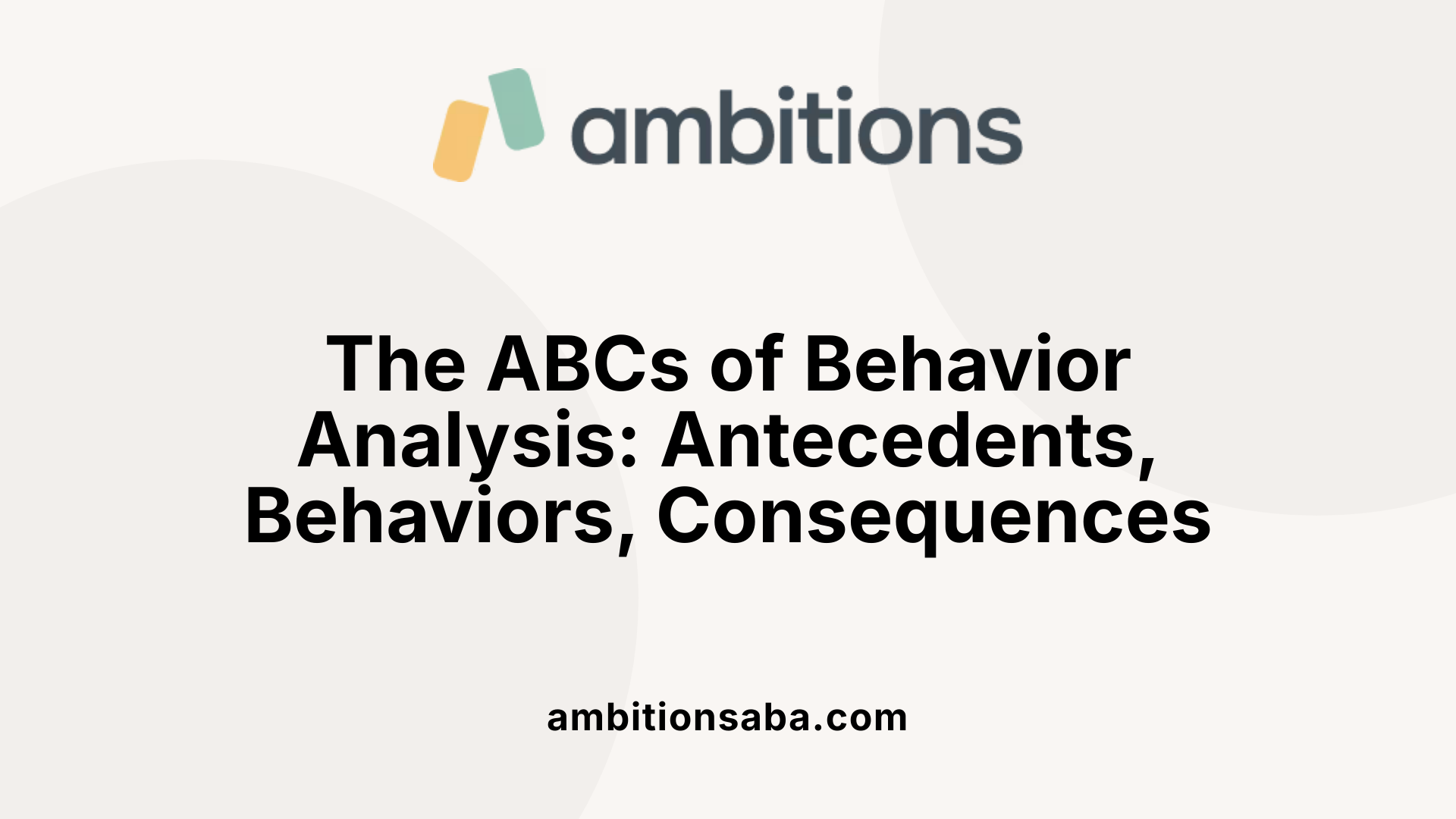
What is the Antecedent-Behavior-Consequence (ABC) Framework?
The ABC framework is central to Applied Behavior Analysis (ABA). It breaks down behavior into three parts: the Antecedent, which is what happens right before a behavior; the Behavior itself, which is the action taken; and the Consequence, the result that follows the behavior. Analyzing these helps understand why a behavior occurs and what maintains it.
How is the ABC Framework Used in Behavior Modification?
ABA therapists use the ABC model to modify behavior by carefully observing and manipulating antecedents and consequences. For example, positive reinforcement—giving a valued reward after a desired behavior—increases the likelihood the behavior will happen again. Therapists identify antecedents that trigger problematic behaviors and adjust them or change consequences to promote helpful behaviors instead.
Why Are Environmental Contingencies Important in ABA?
Environmental contingencies refer to the specific conditions or consequences in the environment that influence behavior. ABA focuses on deliberately arranging these contingencies to encourage socially beneficial behaviors and decrease harmful ones. This approach recognizes that behavior is shaped and maintained by its context, making environmental adjustments a powerful tool for change.
How is ABA Therapy Structured and Delivered?
ABA is typically delivered through individualized programs tailored to each client’s needs, often involving one-on-one sessions. Therapists use the ABC framework to assess antecedents and consequences, collect detailed data, and adjust strategies over time. This careful approach helps increase desired behaviors and reduce maladaptive ones, commonly within home, school, or clinical settings.
Positive Reinforcement: The Engine of Behavioral Change

What is Positive Reinforcement and Why is it Important?
Positive reinforcement is a foundational technique in Applied Behavior Analysis (ABA) that involves delivering a valued reward immediately following a desired behavior. This reward increases the likelihood that the behavior will occur again in the future. It is central to shaping and encouraging target behaviors within ABA therapy.
How Does Reinforcement Strengthen Operant Behavior?
Operant behavior refers to actions that influence the environment, and these behaviors can be increased by consequences such as positive reinforcement. When a behavior is followed by a pleasant event or reward, it strengthens the behavior's occurrence rate. Essentially, the behavior "operates" on the environment and the positive reinforcement acts as a motivator to repeat that behavior.
Examples of Valued Rewards Used in ABA
Valued rewards vary depending on the individual's preferences and needs. Common examples include verbal praise, tokens exchangeable for privileges or items, access to favorite activities, or tangible items like toys or snacks. These rewards are carefully selected to ensure they effectively motivate the individual, making positive reinforcement a highly personalized and effective strategy in ABA therapy.
Individualized Assessment and Goal Setting in ABA Programs
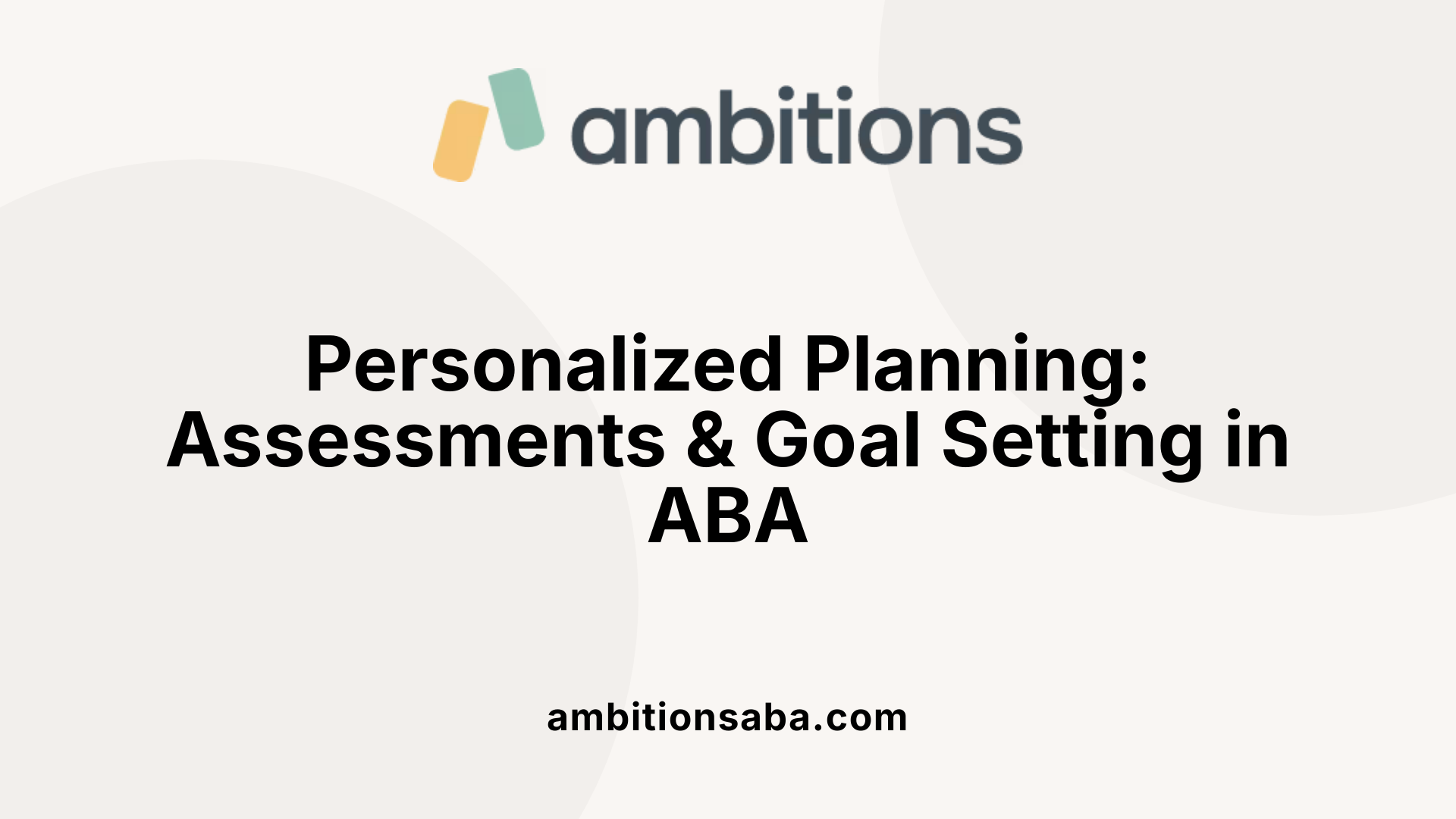
Comprehensive Behavioral Assessments
ABA therapy begins with a thorough behavioral assessment conducted by a Board Certified Behavior Analyst (BCBA). This assessment identifies the individual's existing skills, strengths, and areas requiring improvement. It considers how environmental factors influence behavior by analyzing antecedents and consequences using the ABCs framework (Antecedent-Behavior-Consequence).
Developing Individualized Goals
Based on the assessment, the BCBA develops specific, measurable goals tailored to the individual's needs. These goals aim to increase helpful behaviors such as communication and social skills, while reducing behaviors that interfere with learning or daily functioning. Goal setting is personalized to ensure that interventions are relevant and achievable.
Ongoing Data Collection and Program Adjustments
ABA programs rely on continuous data collection to monitor progress. Therapists track behavior frequency and quality, using positive reinforcement to encourage target behaviors. The BCBA reviews this data regularly to modify strategies as needed, ensuring that interventions remain effective and responsive to the individual’s changing needs.
This structured approach, incorporating assessment, individualized goal-setting, and data-driven adjustments, ensures that ABA therapy is flexible and optimally designed to promote meaningful progress in clients with autism.
Who Delivers ABA Therapy? Qualifications and Roles

Roles of BCBAs and RBTs
ABA therapy services are primarily delivered by two types of professionals: Board Certified Behavior Analysts (BCBAs) and Registered Behavior Technicians (RBTs). BCBAs are highly trained specialists who oversee and customize ABA treatment programs. They are responsible for conducting detailed assessments, setting individualized goals, and making ongoing adjustments to intervention strategies. RBTs provide direct one-on-one or group therapy under the supervision of BCBAs, implementing the treatment plans that have been carefully designed.
Educational and Certification Requirements
BCBAs earn graduate degrees in behavior analysis, psychology, or related fields and must pass a rigorous certification exam. Their advanced education prepares them to interpret data, develop complex behavior intervention plans, and supervise therapy teams. RBTs undergo specialized training focusing on implementing ABA techniques in practice and must pass a competency-based examination. This tiered structure ensures a high level of quality and consistency in therapy delivery.
Collaboration with Other Professionals
In many cases, BCBAs collaborate with other healthcare and educational professionals to promote comprehensive care. This can include speech-language pathologists, occupational therapists, educators, and medical providers. Such collaboration helps integrate ABA principles across settings and supports the broad developmental needs of individuals receiving therapy.
This team-based and credentialed approach to ABA delivery ensures that services are scientifically grounded, tailored to individual needs, and delivered by competent professionals, contributing to the effectiveness and reliability of ABA therapy programs.
Goals and Outcomes: What ABA Therapy Seeks to Achieve
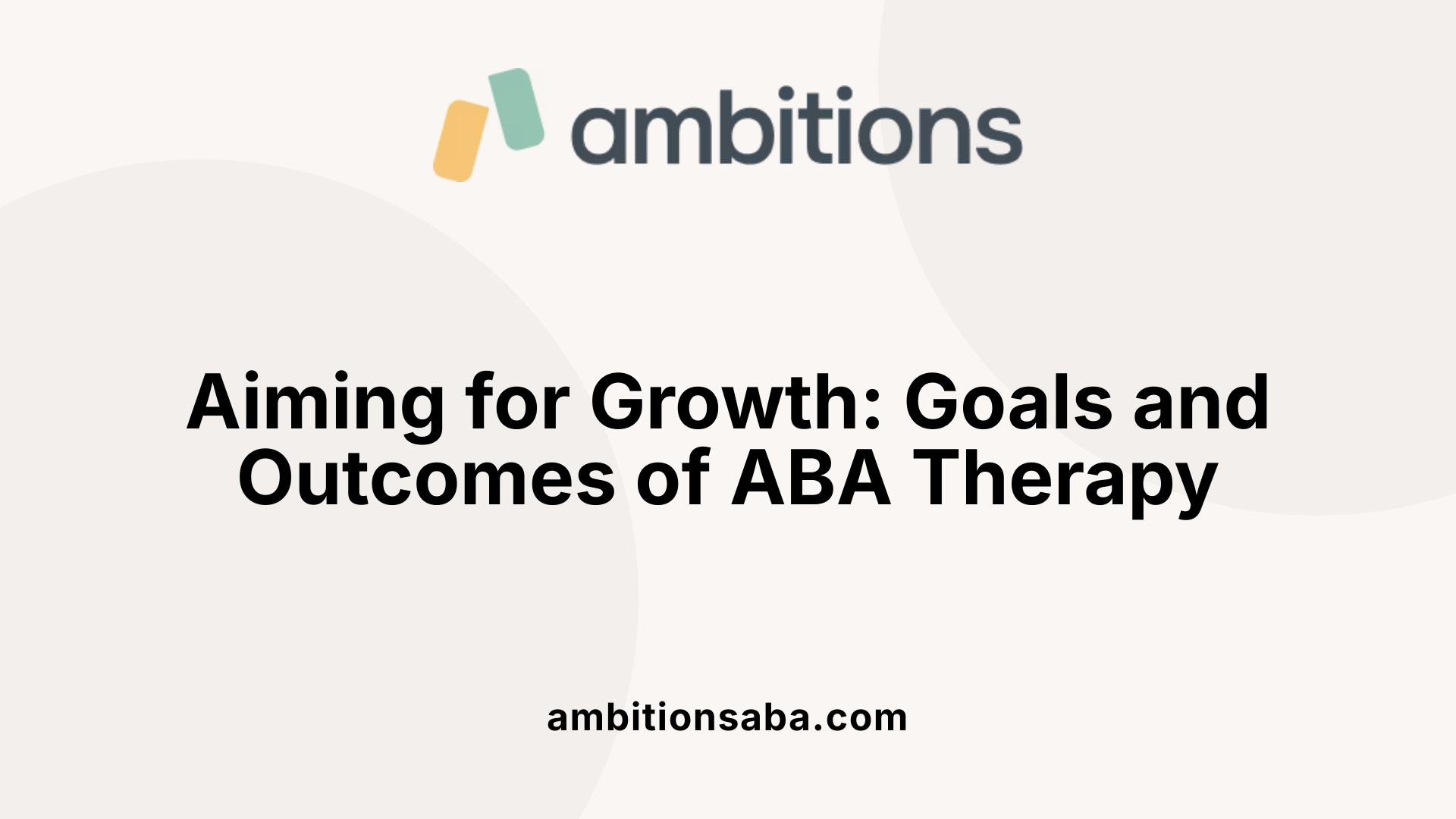
What are the typical goals and outcomes of ABA therapy for individuals with autism?
ABA therapy is designed to produce meaningful improvements across several areas crucial for daily functioning and overall well-being. One primary aim is to enhance communication and social skills. This includes the development of language abilities, improved attention during interactions, and better understanding of social cues, which greatly support effective social engagement.
In addition to social communication, ABA promotes the development of daily living skills and independence. Activities such as self-care, memory tasks, and academic skills fall under this category, helping individuals gain the autonomy needed for everyday life.
Another vital goal of ABA is the reduction of problematic or harmful behaviors that may hinder learning or socialization. By applying techniques like positive reinforcement and analyzing environmental factors, ABA helps decrease behaviors that are disruptive and increase those that are constructive.
Long-term positive outcomes of ABA therapy include enhanced intellectual functioning, higher adaptive abilities, and overall improved quality of life. Intensive, long-term programs typically ranging from 25 to 40 hours per week show significant benefits, especially when tailored to individual needs and delivered by qualified professionals.
Through careful assessment, individualized goal setting, and ongoing adjustments, ABA therapy strives to help individuals with autism achieve sustainable growth and greater independence.
Flexibility and Settings: Delivering ABA Therapy Across Environments

How is ABA therapy typically structured and delivered to clients with autism?
ABA therapy is highly flexible, tailored to meet the unique needs of each individual. It can be delivered in both one-on-one and group formats, allowing therapists to adjust the intensity and style of intervention based on client preferences and goals.
ABA sessions often take place in a variety of environments. Common settings include the client's home, specialized clinics, and educational settings like schools. This variety ensures that skills learned during therapy generalize across different contexts, making the intervention more effective.
Family involvement is a critical component in ABA therapy. Therapists often work closely with parents and caregivers, training them to use ABA techniques in naturalistic settings. This approach helps to reinforce new skills throughout daily routines, promoting consistency and improving outcomes.
Naturalistic teaching methods are frequently employed to embed learning in everyday activities. By integrating interventions into typical interactions and environments, ABA supports the development of communication, social, and adaptive skills in a meaningful and functional way.
Overall, the structure and delivery of ABA therapy emphasize adaptability, comprehensive settings, and collaboration with families to maximize progress and skill retention.
Stimulus Equivalence: A Critical Behavioral Process in ABA
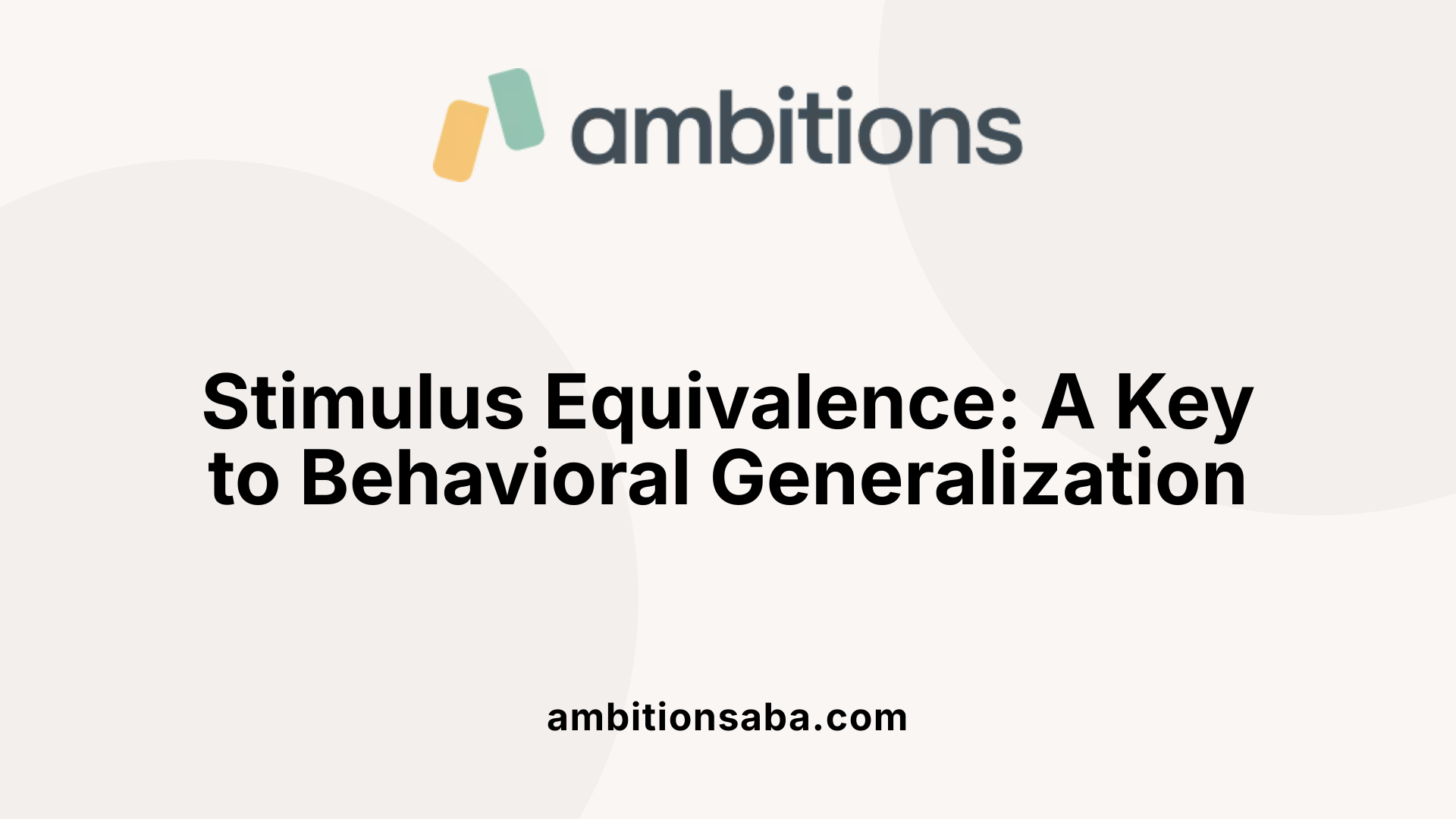
What is Stimulus Equivalence?
Stimulus equivalence is a behavioral process explored within Applied Behavior Analysis where different stimuli become interchangeable or equivalent in the eyes of the learner. This means that the individual responds similarly to different stimuli because they have been trained or naturally come to understand these stimuli as related or representing the same concept. In practice, this might involve teaching a child that the word "dog," a picture of a dog, and the actual animal are all connected; the child then responds appropriately to all three stimuli.
How Does Stimulus Equivalence Support Generalization?
One of the strengths of ABA is its focus on applying learned behaviors across different contexts—a process called generalization. Stimulus equivalence aids this by allowing behaviors learned in one setting or with one stimulus to transfer to others without separate direct training. For example, once a learner builds equivalence between various representations of a concept, they can apply skills flexibly in new environments or with new related materials, promoting independent functioning.
Why is Stimulus Equivalence Relevant to Teaching and Skill Acquisition?
Stimulus equivalence plays a crucial role in efficient teaching strategies within ABA. By establishing equivalence classes, therapists can teach a skill or concept once and expect the learner to apply it broadly. This approach accelerates language acquisition, improves communication skills, and enhances cognitive development. It also reduces the need for repetitive teaching of essentially the same material under different forms, making interventions more effective and less time-consuming.
Through understanding stimulus equivalence, ABA practitioners design comprehensive, adaptable programs that ensure skills learned are robust, generalized, and functional across various everyday settings, thereby maximizing therapeutic outcomes.
The Role of Stimulus Equivalence in Enhancing Functional Skills in Autism

How Does Stimulus Equivalence Apply to Communication and Social Skills?
Stimulus equivalence is a concept within ABA that involves teaching individuals to recognize different stimuli as related or interchangeable, even if they appear different. In autism therapy, this approach is instrumental in improving communication and social skills. For example, a child can learn that the spoken word "dog," a picture of a dog, and the actual animal all represent the same concept. Such equivalence classes enable more flexible understanding and use of language beyond rote memorization, aiding in smoother social interactions and broader comprehension.
How Can Stimulus Classes Facilitate Adaptive Behavior?
Stimulus classes group different environmental cues that signal the same expected behavior. By associating multiple stimuli with one response, ABA therapists help individuals develop adaptive behaviors that generalize across settings and situations. This means a person with autism might respond appropriately to various types of requests or social cues that previously seemed different, increasing independence and effective functioning in everyday life.
In What Ways Does Stimulus Equivalence Reduce Teaching Time?
By promoting stimulus generalization, stimulus equivalence reduces the need to teach each new cue or behavior separately. Once an individual learns to relate stimuli within a class, new skills can transfer naturally without extensive retraining. This efficiency is particularly valuable in intensive ABA programs where time and resources are optimized by leveraging these learned connections, shortening the duration required for acquiring functional skills.
Stimulus equivalence thus acts as a powerful tool within ABA to expand functional communication, foster adaptive responses, and streamline the teaching process, ultimately enhancing the quality of life for individuals with autism.
Evidence Base for ABA and Stimulus Equivalence: Scientific Validation
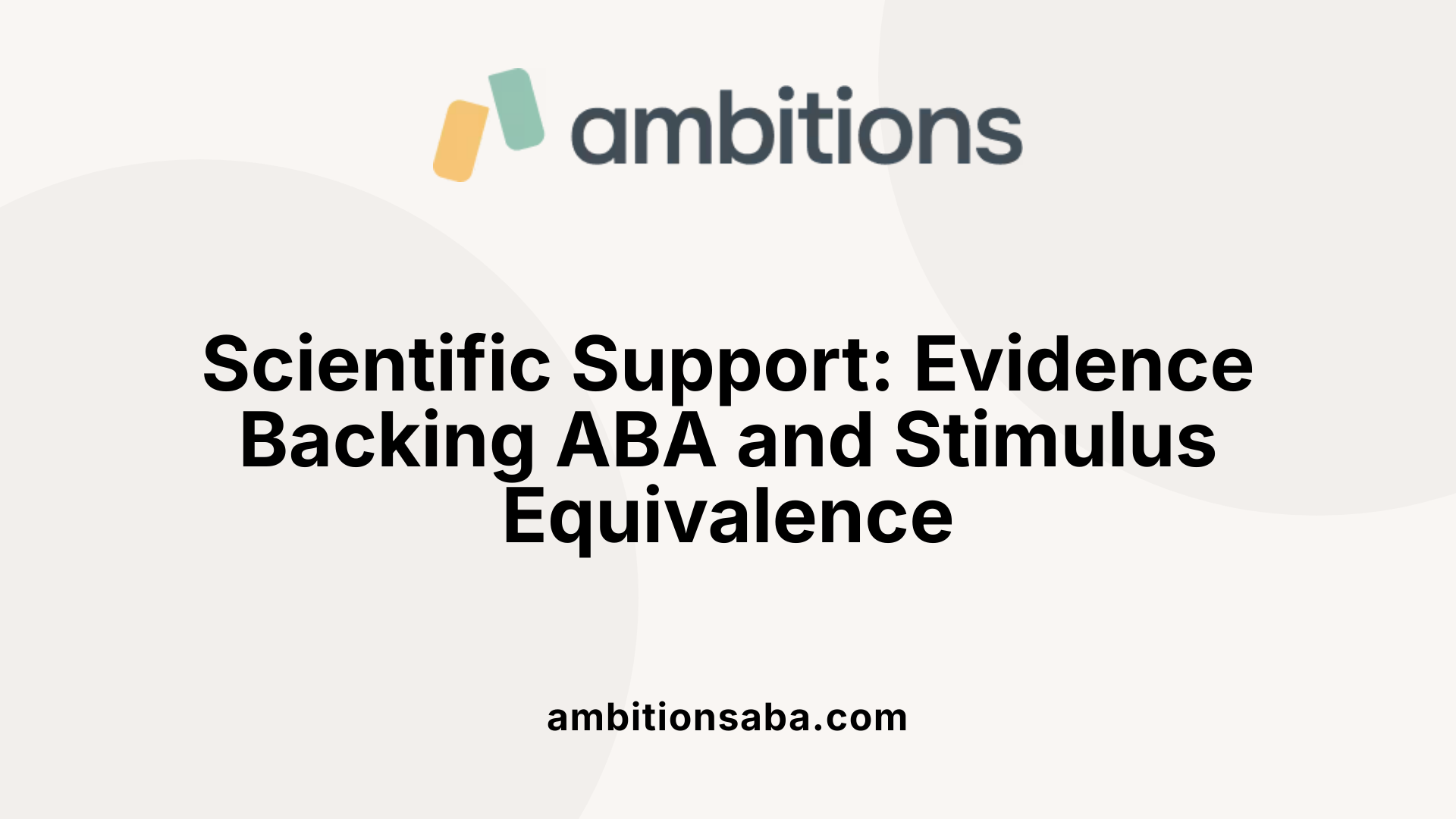
Research Supporting ABA Effectiveness
Applied Behavior Analysis (ABA) is a scientifically validated therapy that has garnered robust research support for its effectiveness. Intensive, long-term ABA therapy, often involving 25 to 40 hours per week over 1 to 3 years, has been demonstrated to significantly improve language, communication, social skills, memory, academic skills, and reduce problem behaviors, especially in children with autism. Numerous studies have confirmed these positive outcomes, highlighting ABA's role in enhancing functional skills across all age groups.
Studies on Stimulus Equivalence and Behavior Generalization
Stimulus equivalence is an important concept related to behavior generalization within ABA. It refers to the phenomenon where different stimuli come to be perceived as equivalent through learned associations, facilitating the transfer of learned behaviors across varied contexts. Research in this area reinforces the flexibility of ABA interventions, demonstrating how behaviors adapted through stimulus equivalence maintain across environments and situations, leading to sustained, generalized behavior change.
Endorsements by Health Authorities
ABA is recognized as an evidence-based treatment endorsed by reputable health organizations such as the US Surgeon General and the American Psychological Association. These endorsements reflect the consensus within the health community regarding ABA's effectiveness in improving developmental and behavioral outcomes. Furthermore, many private insurance plans and Medicaid programs explicitly cover medically necessary ABA treatments, underscoring its established standing as a medically justified intervention.
Together, research findings and authoritative endorsements firmly position ABA as a scientifically validated approach with broad applicability and demonstrated long-term benefits in behavior modification and learning enhancement.
Navigating Insurance and Access to Quality ABA Care

Insurance Coverage for ABA
Many private insurance plans now cover Applied Behavior Analysis (ABA) therapy, reflecting its recognition as an evidence-based treatment. Additionally, Medicaid explicitly provides coverage for medically necessary ABA services for children under the age of 21. This expanded coverage helps make ABA more accessible to families seeking therapy for a variety of behavioral and developmental concerns.
Importance of Selecting Qualified Providers
ABA therapy is delivered by licensed professionals including Board Certified Behavior Analysts (BCBAs) who oversee treatment programs and Registered Behavior Technicians (RBTs) who often provide hands-on therapy. Choosing providers with proper credentials and experience is crucial to ensure high-quality, individualized care. Qualified professionals tailor ABA services to meet each person’s unique needs, employing thorough assessments, data-driven strategies, and ongoing program adjustments.
Parental Guidance on Obtaining ABA Services
Parents are advised to consult their healthcare providers to discuss the appropriateness of ABA therapy for their child. It is important to verify insurance coverage beforehand, as policies vary widely. When selecting an ABA provider, families should inquire about qualifications, treatment approaches, and experience with specific needs. Asking these questions helps secure effective and ethically administered therapy that optimizes developmental outcomes.
Stimulus Equivalence in ABA: Bridging Behavior and Learning for Better Outcomes
Stimulus equivalence rests at the heart of ABA’s ability to promote flexible, generalized learning that extends beyond rote responses to meaningful adaptation across varied contexts. This behavioral phenomenon, grounded in ABA’s fundamental principles, empowers individuals with autism to connect related stimuli and respond appropriately in new situations, enhancing functional skills and independence. By understanding the science behind behavior and using systematic reinforcement strategies, ABA—guided by qualified professionals—offers tailored interventions that support growth across a spectrum of developmental areas. As stimulus equivalence exemplifies the sophistication of ABA’s approach to shaping behavior, embracing this concept can deepen appreciation for how learning truly occurs and foster even greater success in autism therapy outcomes.
References
- Applied Behavior Analysis (ABA)
- Sage Reference - Applied Behavior Analysis
- Applied Behavior Analysis (ABA)
- Who Qualifies for ABA Therapy: Eligibility Guide
- Applied Behavior Analysis (ABA)
- The Complete Guide to ABA In-Home Therapy: Benefits ...
- Understanding Your Child's ABA Therapy Providers
- Applied Behavior Analysis (ABA)

